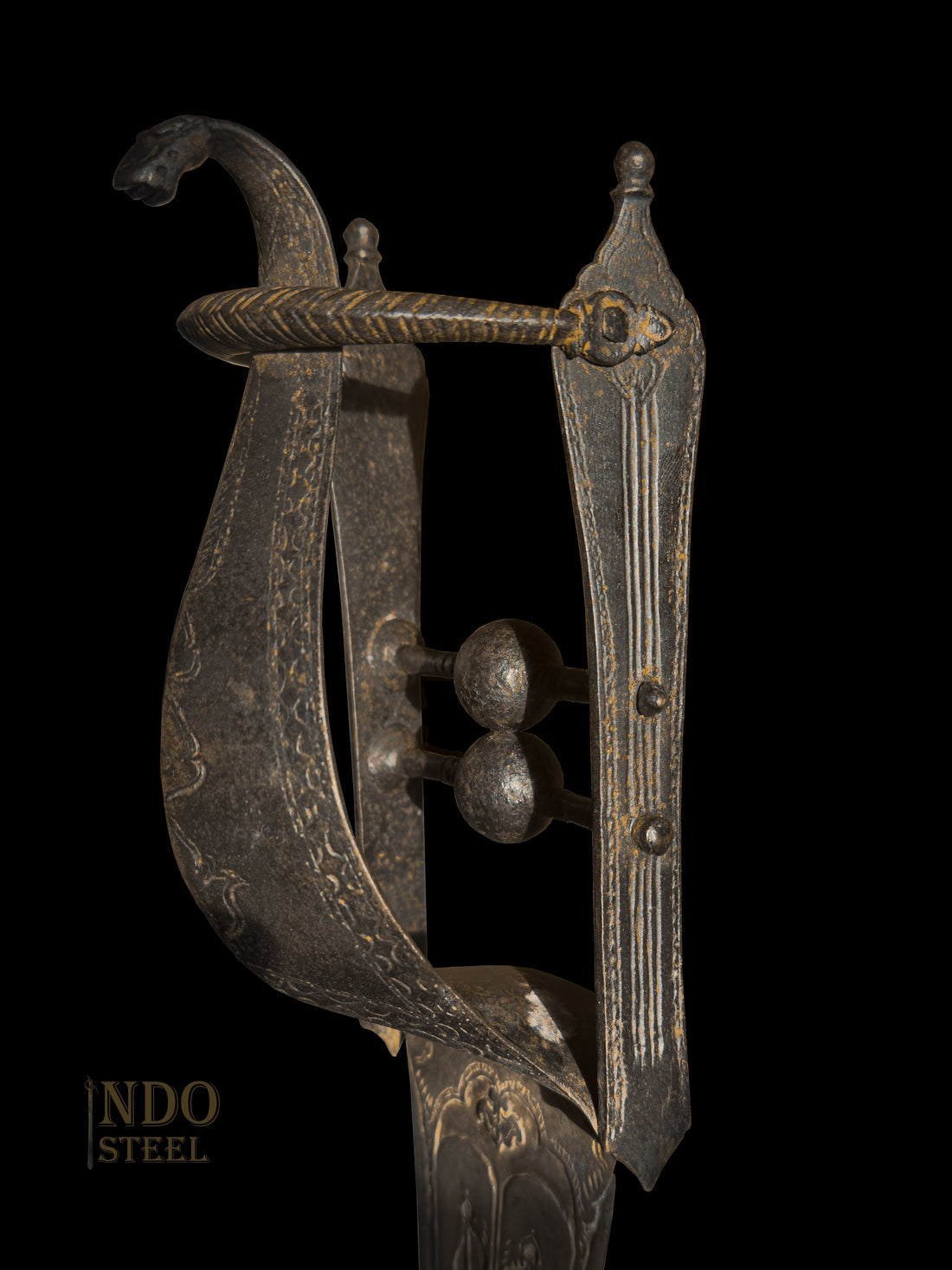
The Vijayanagara katar


 The Vijayanagara katar, was primarily designed for close combat. Its blade, typically broad and triangular, was excellent for thrusting in tight spaces, making it effective in hand-to-hand combat (1).
The Vijayanagara katar, was primarily designed for close combat. Its blade, typically broad and triangular, was excellent for thrusting in tight spaces, making it effective in hand-to-hand combat (1).
The most distinguishing feature of the Vijayanagara katar is the “hood,” which refers to a protective, curved extension on the hilt, located above the handgrip. The hooded design, however, was not solely a practical adaptation. It also had cultural significance. Vijayanagara craftsmen were renowned for their intricate metalworking skills, and the katar was often adorned with elaborate decorations, including depictions of gods, mythological creatures, or geometric patterns (2). The hood, could therefore be seen as a means of securing the favour of deities, ensuring the success of military campaigns. This spiritual dimension was integral to the martial culture of the Vijayanagara Empire, where warfare was often framed as a cosmic struggle between divine forces (3).
This 17th-century katar from the Vijayanagara Empire showcases the quintessential artistry of South Indian weaponry. Coming in at 51cm the blade is distinctively fullered, the katar is adorned with a sculpted Yali prominently positioned on the hood of the katar. The Yali’s most prominent role is as a recurring motif in temple architecture. It has been a common decorative and symbolic feature in South Indian temples, where it often appears as a sculpture on temple pillars, gates, and walls. The Yali is generally shown in a dynamic, aggressive pose, symbolizing the forces of protection (4). The meticulous details on the blade and the guard, reflect the craftsmanship and cultural significance attributed to weapons during the Vijayanagara period.
1. Zutshi,M. (2014). Vijayanagara and the Material Culture of War.
2. Srinivasan,S. (2001). The Martial Arts of South India: The Evolution of the Katar.
3. Lal, K. (1997). Weapons of the Vijayanagara Empire.
4. Srinivasan, S. (2001). Indian Temple Architecture: Form and Transformation.
